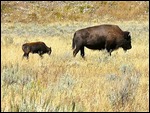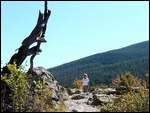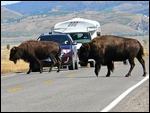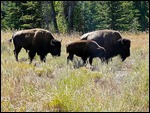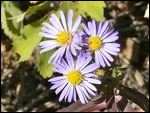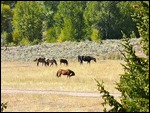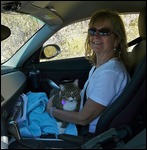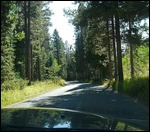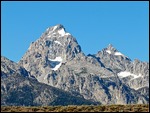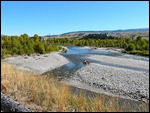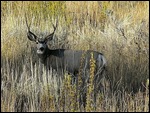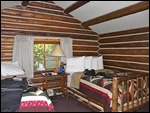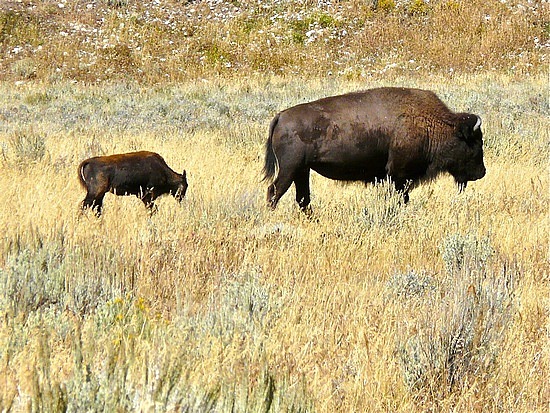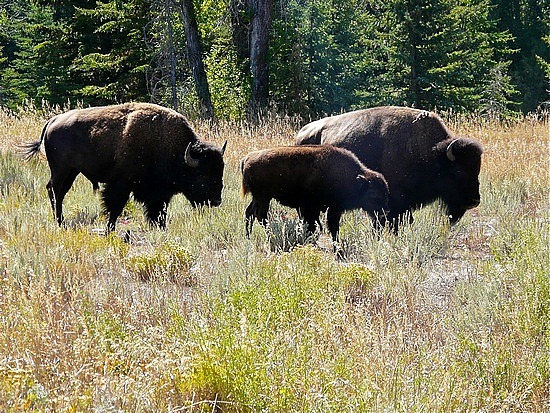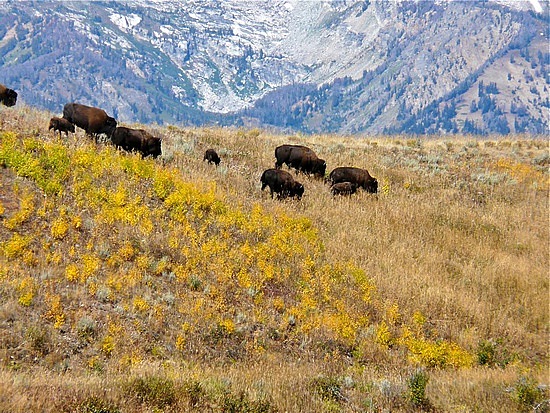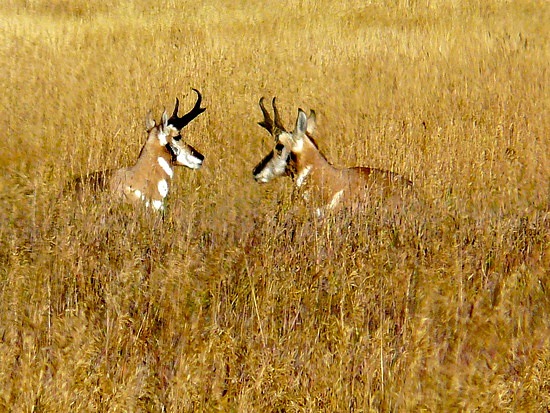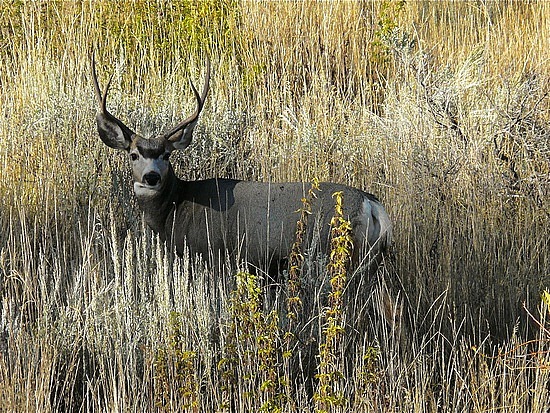Somehow we have accumulated a few more things or aren't packing as efficiently, as it was a struggle getting all of our gear into the car this morning. We had to stuff the soft cooler behind my seat, which meant that Tuna and I were a bit short of space. By the time we had breakfast and packed up, we hadn't gotten the early start we planned. We stopped at Backcountry Provisions for sandwiches to eat later, then drove north toward Grand Teton National Park. Soon we had fabulous views of the Tetons and other mountains in the range; what a magnificent group of mountains.
We passed by the National Elk Refuge. The US Fish and Wildlife Service manages this refuge, providing nearly 25,000 acres of grazing land and supplementing with alfalfa pellets. In the fall, when the weather starts to turn, some 5,000 elk come down to the refuge from the mountains. Here they spend their winter. We didn't see any, it's a bit too early, but it must be an amazing sight when they are there. During the winter months, the refuge is home to the world's largest winter concentration of elk. In addition to the elk, the range is a winter home to moose, bighorn sheep, bison, mule deer, wolves, coyotes, badgers, ground squirrels, muskrat, beaver, porcupine, long-tailed weasel, voles, bald eagles, ravens, magpies, and hawks.
Instead of continuing on the main road north, we followed the elk refuge northeast, then took the Gros Ventre loop road. We were soon rewarded with the sight of a large herd of bison. Some were grazing on the sides of the road. Many were still coming from the east and we sat and watched them cross the road, right next to us, to join the rest of the herd for some nice grazing. We saw several babies with their moms, including one baby nursing. Bison are the largest animals in the parks. Adult bulls are more than six feet tall at the shoulder and weigh more than a ton. They can run faster than humans and more people are injured by bison than by any other animal in the parks. There are lots of signs warning people to keep their distance. There was a park ranger also admiring the bison and taking photos. She was probably also keeping an eye on the people to make sure no one did anything stupid.
We continued northeast through the little town of Kelly; there were few other cars on the road. North of Kelly we took a small road east to view the Gros Ventre Slide, some 10+ miles further on. This drive follows a narrow, twisting road through groves of quaking aspen and other trees, and the colors this time of year were beautiful. We followed rivers and mountains. Eventually we came to the site of the slide. In June 1925 a mile-long layer of sandstone suddenly tore loose from the mountain and slid downhill, damming the Gros Ventre River and forming Lower Slide Lake. Two years later a part of the lake burst through its natural dam and sent a wall of water rushing downstream toward the town of Kelly, which was virtually destroyed. We took the trail and were the only people on it; we shared it with a few squirrels and grasshoppers and birds and whoever may have been lurking in the brush. We hoped there weren't any bears around since we'd left the bear spray in the trunk of the car. It was a pretty hike and one not often taken as there were parts of the trail that were overgrown. The remnants of the slide are obvious in vast spreads of broken rock and you can still see the slide on the mountainside. Eventually we arrived at the end of the trail, an overlook with the beautiful Slide Lake below.
We backtracked (it's a dead end road) and then continued the Gros Ventre loop back to the main GTNP road. We detoured south a bit to the Moose visitor complex and talked to a ranger about where to best view wildlife while in the park. He suggested a side road from Moose that eventually winds up at Teton Village, the big ski resort. It's a narrow road and trucks/RVs aren't allowed on it. It was a pretty drive and we followed it for several miles, then turned around and returned to Moose. By now it was mid afternoon and we were getting hungry. We rejoined the eastern section of the main loop road and headed north. We saw more bison in those meadows. Later we caught sight of a pair of pronghorn antelope, laying in the field chewing their cud. They are beautiful animals.
We took Deadman's Bar road down to the Snake River; it had a 19% grade and was narrow and winding. At the river we found that this is where many of the float trips are launched. We sat on a log and ate our very late lunch - by now it was after 4 - and watched a few boats load up with customers and head down river. Floating would be enjoyable but we decided we had a lot more fun doing the whitewater section and paddling ourselves rather than just sitting and drifting down a calm section of the river.
We decided it was time to get to our lodge, so we continued north to the Moran Junction, then headed west. Just before the Jackson Lake Junction we spotted a huge stag munching grass near the road and we stopped and watched him for some time. Then we continued a few miles to Jackson Lake and our home for the next four nights, the Signal Mountain Lodge. We have a cute little log cabin, two bedrooms so plenty of room to spread out. The location is gorgeous, right on the lake. Not long after we arrived Mark looked out the window and saw a mule deer across the little road from our cabin. Later the deer came behind our cabin and settled in for a rest. So cute.
The only place that there is internet service here is in the lobby of the main building. We took our laptops there to get caught up on email, then had dinner in one of the lodge restaurants. This lodge will close for the winter in a couple of weeks; this week it's full.
